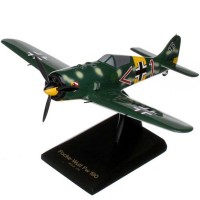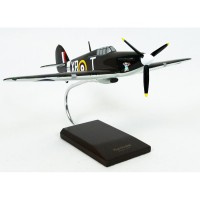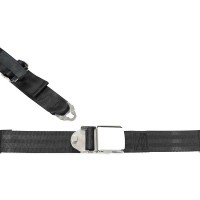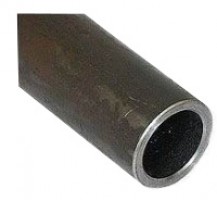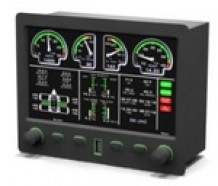1-877-795-2278 | info@aircraftspruce.ca
Aircraft Spruce Canada
Brantford, ON Canada
Corona, CA | Peachtree City, GA
Chicago, IL | Wasilla, AK
Aircraft Spruce Canada
Brantford, ON Canada
Corona, CA | Peachtree City, GA
Chicago, IL | Wasilla, AK
FREE SHIPPING ON ORDERS OVER $699 (SOME EXCLUSIONS APPLY) | 877-795-2278
P-39D Airacobra Model
$291.95/Each
Part# 13-10564
MFR Model# AP39T
MFR Model# AP39T
Overview
|
The Bell P-39 Airacobra was an all-metal, low-wing, single-engine fighter that entered service at the start of World War II. Manufactured by Bell Aircraft Corporation, the P-39 was flown by Robert Goebel and Bud Anderson in April 1939. The P-39 Airacobra had a tricycle landing gear, which was the first such gear ever used on a production fighter. The Airacobra battled throughout the world, particularly in the Southwest Pacific, Mediterranean and Russian theaters. Because its engine was not equipped with a supercharger, the P-39 performed best below 17,000 feet (5,200 m) altitude. It often was used at lower altitudes for such missions as ground strafing. Same with the P-63 Kingcobra, the P-39 aircraft was considered to be the most victorious mass-produced, fixed-wing aircraft manufactured by Bell Aircraft Corporation. Primarily used by the U.S Army Air Force, over 9,500 P-39s built. The P-39D variant of the Aircobra has maximum speed of 368 mph (592 km/h) @ 12,000 ft (3,658 m), a service ceiling of 32,100 ft (9,784 m) and a range of 1,545 miles (2,486 km). The first P-39D Airacobras entered service with the USAAC in February 1941, first with the 31th Pursuit Group (39th, 40th, and 41st Pursuit Squadrons) based at Selfridge Field, Michigan. Between February 12 and March 21, 1941, 27 USAAC pilots flew three P-39Ds over 160 accelerated service test hours at Patterson Field in Osborne, Ohio. In March of 1941, Bells test pilot Vance Breese drove an Airacobra 15,000 feet to pass the final Army Air Corps test. The 39th PS participated in the ""Carolina Maneuvers"" from September to November of 1941, which was a series of war games during which five different squadrons flew Airacobras. The P-39D (along with the P-400) was the first to see combat in US service. A total of 1,767 P-39D built. |
Q&A
Please note, Aircraft Spruce Canada's personnel are not certified aircraft mechanics and can only provide general support and ideas, which should not be relied upon or implemented in lieu of consulting an A&P or other qualified technician. Aircraft Spruce Canada assumes no responsibility or liability for any issue or problem which may arise from any repair, modification or other work done from this knowledge base. Any product eligibility information provided here is based on general application guides and we recommend always referring to your specific aircraft parts manual, the parts manufacturer or consulting with a qualified mechanic.

 Aircraft Spruce Canada
Aircraft Spruce Canada






